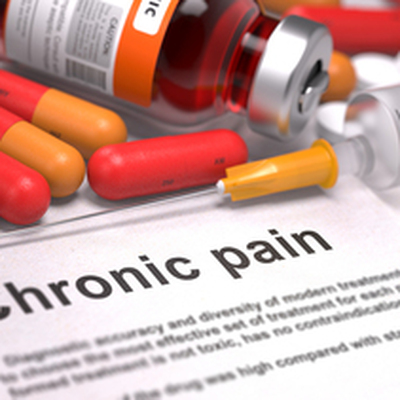Weed vs Opioids
الجسم
Weed vs Opioids: The Quiet Shift in Chronic Pain Management
Chronic pain affects millions worldwide, hence the question Weed Vs Opioids but traditional opioid treatments are increasingly overshadowed by addiction risks and fatal overdoses. Enter cannabis, a natural alternative gaining traction for its holistic pain-relieving properties. As the opioid epidemic rages, patients and clinicians are quietly embracing cannabis for safer, sustainable relief. This blog unpacks the science, patient stories, and trends driving this transformative shift in non-opioid pain management.

What Are Opioids?
Opioids are powerful prescription medications commonly used to treat moderate to severe pain, especially after surgery or injury. Common opioids include:
These drugs work by binding to opioid receptors in the brain and spinal cord, blocking pain signals and often producing a sense of euphoria. However, prolonged use can lead to tolerance, dependence, and addiction.
What Is Medical Cannabis?
Medical cannabis (or medical marijuana) refers to the use of cannabis plants and cannabinoids like THC and CBD for treating health conditions, including chronic pain, inflammation, anxiety, and insomnia.
It’s available in multiple forms:
Unlike opioids, cannabis works with the endocannabinoid system, which plays a key role in regulating pain, mood, sleep, and immune response.
How Opioids and Cannabis Work: Two Roads to Pain Relief
Opioids: High Risk, Short-Term Gain
Opioids like oxycodone and morphine block pain signals by binding to brain receptors, but their dangers are undeniable:
-
Addiction: Over 80,000 opioid overdose deaths occurred in the U.S. in 2022.
-
Tolerance: Escalating doses are needed over time, deepening dependency.
-
Side Effects: Respiratory depression, constipation, and severe withdrawal.
Cannabis: Holistic Pain and Inflammation Control
Cannabis interacts with the body’s endocannabinoid system, targeting pain, inflammation, and emotional wellbeing through:
-
THC: Reduces pain perception and boosts mood (with psychoactive effects).
-
CBD: Combats inflammation and anxiety without a “high”.
Key Insight: Unlike opioids, cannabis addresses both physical pain and its emotional toll, promoting functionality and quality of life.
Safety Face-Off: Weed vs Opioids
| Factor | Opioids | Cannabis |
|---|---|---|
| Addiction Risk | High (10% develop dependence) | Low (9% risk of cannabis use disorder) |
| Overdose Potential | Fatal respiratory depression | Non-lethal, even at high doses |
| Common Side Effects | Constipation, sedation, withdrawal | Dry mouth, mild dizziness, cognitive fog |
| Long-Term Impact | Organ damage, tolerance, hyperalgesia | Minimal tolerance, no organ toxicity |
Critical Takeaway: Cannabis offers a safer, non-addictive painkiller for chronic conditions, though it’s not risk-free.

Where to Buy Opioids for Chronic Pain Online – Safely and Legally
At Prime Pharmacie, we offer a trusted selection of prescription pain medications, including:
- Oxycodone A215 30mg– Fast-acting relief for moderate to severe pain
- Hydrocodone M367 10/325MG – Ideal for post-surgical and injury-related discomfort
- Diazepam 10mg Valium – For managing chronic or cancer-related pain
- Xanax Alprazolam 4mg & Ativan 2mg Lorazepam – Anxiety management that complements pain treatment
We also support natural alternatives and are committed to patient education and safe use.
Why Patients Are Choosing Cannabis Over Opioids
Real-World Success Stories
-
64% Less Opioid Use: Chronic pain patients using cannabis often reduce opioid doses dramatically, reporting fewer side effects and better sleep.
-
Neuropathic Pain Relief: Studies show THC/CBD blends ease nerve pain, though mild dizziness or sedation may occur.
-
Emotional Resilience: Patients cite reduced anxiety, depression, and stress, fostering a renewed sense of control.
The Opioid-Sparing Effect
Preclinical research reveals cannabis enhances opioids’ pain relief, allowing lower, safer doses. For example, combining THC with morphine reduced opioid needs by 3.6x, slashing addiction risks.
Beyond Pain Relief: Cannabis’ Hidden Benefits
Cannabis doesn’t just mask pain—it transforms the pain experience:
-
Improved Sleep: Patients report deeper, more restorative sleep cycles.
-
Enhanced Mobility: Reduced inflammation allows for increased physical activity.
-
Mental Clarity: Lower stress and anxiety levels improve daily functionality.
Veteran Testimonials: Many veterans credit cannabis with reclaiming their lives post-opioid dependency, citing better pain control and family engagement.
The Future of Pain Management: Innovations in Cannabis Science
Next-Gen Cannabinoids
Researchers are developing synthetic cannabinoids like VIP36, targeting pain without psychoactive effects. These innovations aim to deliver opioid-level relief with zero addiction risk.
Policy Hurdles and Hope
-
Legal Barriers: Federal cannabis restrictions stifle research and patient access.
-
Standardization Challenges: Lack of consistent THC/CBD ratios complicates dosing.
Breakthrough Research: Cannabigerol (CBG), a lesser-known cannabinoid, shows promise in blocking pain signals at the source, offering a natural pain management alternative.
How to Transition Safely: Tips for Patients
-
Consult a Specialist: Work with a pain management doctor to tailor a cannabis-opioid tapering plan.
-
Start Low, Go Slow: Begin with low THC/CBD ratios to gauge tolerance.
-
Track Progress: Monitor pain levels, mood, and side effects in a journal.
Final Thoughts: What the Future Holds
The shift from opioid dependency to cannabis-based therapy represents a major change in how we understand and treat chronic pain. While opioids remain essential in some clinical situations, cannabis offers a more sustainable, low-risk option for many long-term pain sufferers.
If you're struggling with pain, talk to your healthcare provider about your options. Whether you choose to explore medical marijuana, CBD, or prescription pain relievers, make sure you’re informed, safe, and getting the relief you deserve.
Ready to Take Control of Your Pain?
Explore our selection of prescription pain relief and anxiety medications today at Prime Pharmacie—your trusted source for safe, effective chronic pain management solutions.
Other Interesting Topics to explore:
Everything you need to know about Suboxone Strips and how to buy safely online
Can Better Sleep Prevent Weight Gain?
Is Bronchitis Contagious? Here’s What You Need to Know
How to Manage Chronic Pain Without Addiction in 2025
Is Buying Benzodiazepines Online Safe? A Step-by-Step Guide







تعليقات